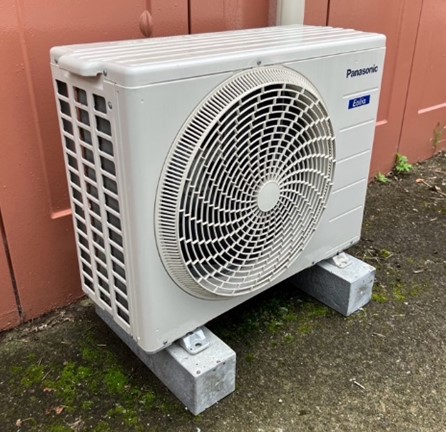- Effective use of hydrogen production by-products contributes to further reduction of CO₂ emissions during production -
IKK Corporation (hereinafter "IKK"), a group company, and Hydrogen Technology Co., Ltd. (hereinafter "Hydrogen") have jointly adopted "Semenon®", which uses "low-emission water glass" (provided by Hydrogen), a by-product obtained from the hydrogen production process, as part of the material for the first time in unreinforced concrete blocks in a construction project carried out by Hydrogen.
*Cemenon® is a geopolymer concrete jointly developed by IKK, Advan Engineering Co., Ltd. (hereinafter referred to as "AE"), IHI Corporation (hereinafter referred to as "IHI"), and Yokohama National University.
By replacing part of the alkaline material in Semenon™ with low-emission water glass, a by-product of the hydrogen production process, it has become possible to significantly reduce CO₂ emissions originating from the alkaline material used in geopolymer concrete.
■Background
Cement, the main ingredient in concrete, is an essential material that supports social infrastructure, but its production involves significant CO₂ emissions. In particular, non-energy-related CO₂ emissions resulting from cement production account for approximately 8% of total global emissions, making reductions in this sector a global challenge toward achieving carbon neutrality.
In this context, cement-free geopolymer concrete is attracting attention as an alternative material that could reduce CO₂ emissions during production.
However, the "water glass" that is widely used as a solidifying agent for geopolymers can pose an environmental burden during its manufacturing process, and there has been a demand for more appropriate raw materials and manufacturing methods.
In response to these challenges, the above-mentioned collaborative research company and Hydrogen have been working together to investigate the application of water glass, a by-product of the hydrogen production process, as part of the material for "Semenon®."
Now, this by-product has been applied as part of the ingredients of "Semenon®" as "environmentally friendly water glass," achieving a reduction in CO₂ emissions of up to approximately 15% compared to the current formulation of "Semenon."

Plain concrete block
(Uses by-product "low-emission water glass")

Installation status
Key Points
・Hydrogen's "low-emission water glass" is applied for the first time to the geopolymer concrete "Semenon®."
- It is also effective from the perspective of waste reduction and resource circulation (circular economy).
- It conforms to the trend toward decarbonization and green procurement in the construction sector, and will contribute to the realization of a carbon-neutral and hydrogen-based society by 2050.
Terminology Notes
*Geopolymer: An inorganic binder made by chemically reacting (polymerizing) powder, primarily composed of aluminosilicate, with an alkaline solution. Unlike Portland cement, which is made by burning limestone at high temperatures, geopolymer does not require high-temperature burning of raw materials and can utilize industrial by-products such as fly ash and ground blast furnace slag as raw materials. It also has excellent fire and acid resistance, and in recent years has been increasingly used in a variety of fields, including building materials, infrastructure repair, fire-resistant structures, and waste containment.
*This is an announcement from IKK/Hydrogen regarding the adoption of low-emission water glass in "Semenon®." "Semenon®" is primarily developed and manufactured by IKK/AE/IHI/Yokohama National University.
*Regarding the expression "low emissions": This expression is based on the origin of raw materials from by-products and our internal evaluation, and the results may vary depending on the calculation assumptions and scope.

